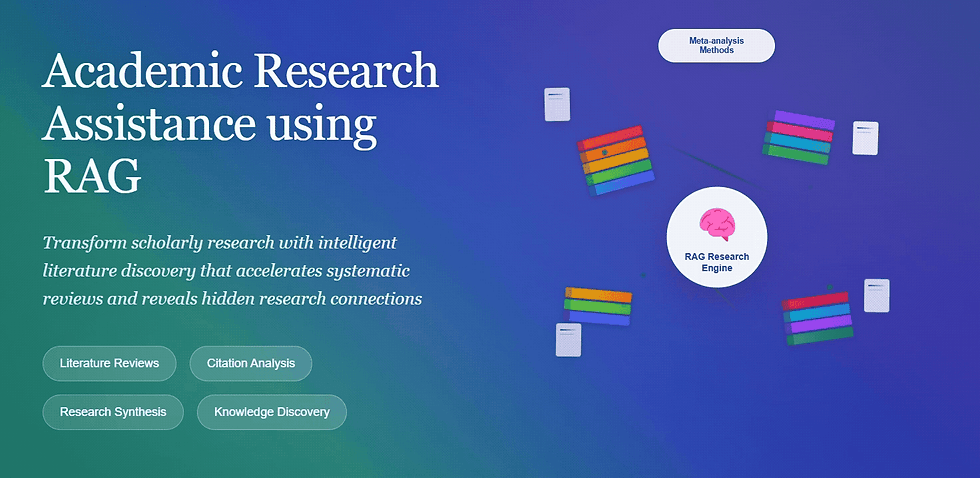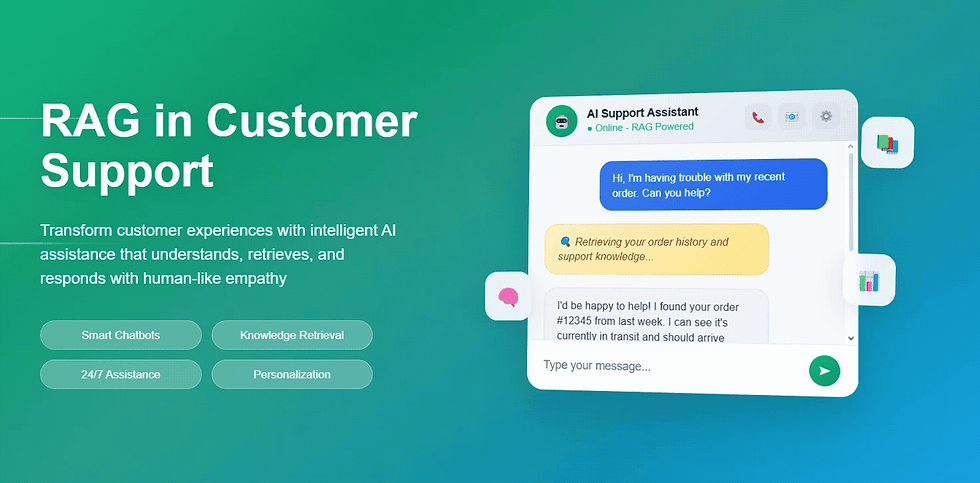Chatbot Assignment Assistance | Chatbot Development
- Pushkar Nandgaonkar
- Oct 20, 2023
- 7 min read

Are you facing a challenging assignment in the field of chatbot development and searching for expert guidance? Designing an effective chatbot that adheres to strict design principles can be a complex task. Whether you're a student looking to create a functional chatbot or a developer aiming to enhance its capabilities, you're in the right place.
What do we offer?
At CodersArts, we understand the intricacies of chatbot design and development, and we're here to provide the solutions you need. In this article, we'll introduce you to a sample assignment that requires the creation of a chatbot, outline its detailed requirements, and showcase how CodersArts can be your trusted partner in tackling assignments like this. Our team of experts is well-versed in AI and chatbot technology, and we can guide you through every step of the assignment, ensuring you meet the highest standards in chatbot design and functionality.
Get Expert Solution
I am providing the sample assignment below. If you require a solution to this assignment or need assistance with similar assignments, please don't hesitate to contact us. We specialize in providing solutions for a wide range of assignments like this and are here to help you succeed.
Sample Assignment
Detailed requirements
Tier 1 (T1) – Foundation
For Tier 1, you will be asked to submit three things:
1. A chatbot (download your chatbot project as a zip file containing one trained model). At a minimum, your submitted T1 bot must be able to respond to the following:
a. Who created you? What is their student number? What is their email address? b. Who were you designed to converse with? Who do you normally talk to?
c. What topic do you know about? What can you tell me about _? What do you know about_?
d. Why do you know about this topic? Do you like talking about _?
e. Can you tell me more about _? Is that all you know about?
2. A justification of how your chatbot meets 3 design principles (1 from each category) (approximately 500 words in the form of a PDF).
3. A user testing plan (in the form of a PDF).
Tier 2 (T2) – Extension
1. A chatbot (in the form of a zip file with one trained model). To create the chatbot, you should follow the following steps:
a. Using ChatGPT or other generative AI, produce 20-25 response sets* to add to your “domain” and “nlu” files, and edit these to better align them with the design principles.
b. Write an additional 15 or more response sets written by you. These will be more nuanced and specific than what can be generated by an AI model, and should be written with the design principles in mind.
c. Complete other necessary files and train your model, ensuring it runs without bugs before submitting. Please note, your chatbot will be marked based on your trained model and the domain.yml file. Please only submit one trained model. If there is more than one model in the folder, only the latest one will be used for marking. Other .yml files are for reference purposes only.
2. A critique and justification based on 6 design principles (2 from each category) (approximately 1000 - 1250 words in the form of a PDF). This must include: a. A critique of the AI generated list of responses, using the design principles as a basis for your critique. To aid clarity in your critique, use examples.
b. A record of AI generated list of responses with your corrections. You can include this as a table with columns ‘AI generated’ and ‘corrected’, or include them as a list with track-changes to show how you edited them.
c. A justification of how you have amended the generated responses to better meet the 6 design principles within the context of the interactions your chatbot is designed to have with users. Note: describe the process you undertook to improve the generated intents and responses in the context of intended interactions, and use examples when referring to changes made.
d. A justification of how you have designed the rest of your chatbot (i.e., your own written responses included in the domain file, as well as the intents and stories included in the other required files), providing evidence and arguments relating to 6 design principles (2 from each category).
3. A user testing audit and testing report (in the form of a PDF). This must include a list of issues identified (usually around 10), where each issue is documented by:
a. Issue name (a few words to summarise the issue)
b. Concise description of the issue, noting it’s impact on interaction (1-2
paragraphs)
c. Example of the interaction which shows the issue (e.g., saved script or screenshot)
d. Recommendation for improvement, noting how the recommendation will improve the interaction (1 paragraph)
*Note: response sets describe a response to a user query that has variations. For example, a response set to “hello” might include responses “hi” “hello, how can I help you” and “hey, what can I do for you today?”. In this case, all three would be included in the response set. It is up to you to determine how many response variations (if any) you would like to include in each of your response sets, and this decision should be guided by your understanding of the design principles. Due to the scope of this assignment, not all response sets are expected to have multiple response variations.
4. A critical analysis of another student’s chatbot (approximately 500-750 words in the form of a PDF). This must include the following sections:
a. Introduction: Write a short paragraph of a few sentences describing the chatbot, its name, knowledge topic, what design principles were used.
b. Strengths/weakness: Concisely describe a comprehensive set of accurate, relevant and specific strengths and weaknesses together with appropriate
justifications.
c. Personal reflection: Concisely describe your experiences and feelings from the interactions.
d. Analysis of Design principles: For any 4 of the design principles, concisely state your assessment of the level that the chatbot exhibits that design principle, e.g., “fully”, “somewhat”, “not at all”, together with an appropriate justification.
e. Conclusion: Briefly summarize the insights of what you have learnt from this critical analysis and how these can help improve your own chatbot. (note: this doesn’t mean ideas you can copy from the other chatbot, rather, how have you learnt about best practices and common mistakes in chatbot design and how can you apply these insights in your own design)
In writing the written elements of your assignment, ensure that you always justify your assumptions, opinions and conclusions with evidence. In addition, please ensure your writing is: • Clear — Your writing must be easily understandable to a non-expert reader by avoiding uncommon terminology and abbreviations.
• Concise — You must express your ideas efficiently, so that key points are not obscured by irrelevant material. In other words, always stick to the point you are trying to make without padding your writing with unnecessary words and sentences.
• Coherent — Your conclusions must follow logically from your assumptions. • Convincing — The content that your present should be compelling and believable.
During the self-directed learning weeks, you will be provided with supporting material, including templates, to assist you in formatting your submission.
Referencing, use of AI and Academic Integrity
We expect that you will draw from some literature (at least some of the papers we have referenced for you for the design principles) in the written components of this assignment. If you draw from any ideas from any source, you need to provide adequate referencing.
Plagiarism is taken very seriously at QUT and multiple methods are employed to detect it. Not only is it a violation of the academic integrity policy to plagiarise; at a more basic level, it is unethical to take someone else’s words or ideas and present them as your own. You will not be awarded any marks for sections that include copied text (even if the wording has been changed or rearranged), as the marks for someone else’s ideas and writing do not belong to you. In addition, if the amount of work that is plagiarised reaches a certain level, we are required to report it.
Ideas that have been developed by others can be included in your work, as long as you reference where they came from. If you do draw from external sources, such as research papers, to support your claims and develop your arguments in written parts of this assignment, you will need to reference them appropriately. All references should be in APA format both in the body of the report and in the reference list.
For information on APA referencing, please see the following link:
https://www.citewrite.qut.edu.au/cite/qutcite.html#apa
Use of AI Tools
A component of this assignment involves the use of AI tools. Note that these should only be used in the way described in the assignment guide. Using AI tools such as ChatGPT to generate other parts of your assignment without substantially transforming/editing the text yourself is not permissible, and unlikely to meet the requirements as graded according to the marking criteria.
Remember that these tools cannot attend the lecture or tutorials for you, nor do they have human-level ability for genuine reflection and critical analysis and as such, are unable to meet the specific requirements of the assignments to the same quality as you can. Overly generic content that does not relate to specifics of what is taught in the unit and required in this assignment will not meet essential criteria for a passing grade.
Deliverables You Can Expect
We will provide all the things you need for this assignment. At CodersArts, our commitment is to offer comprehensive support to ensure your success in completing the assignment. Whether it's providing you with the necessary guidance, resources, or solutions, we've got you covered. Our expert team is equipped to assist you at every step of the way, so you can confidently tackle the assignment with all the support you require.
Well-crafted chatbot models designed to meet assignment requirements.
Enhanced chatbot design skills and a deeper grasp of AI-driven conversational agents.
On-time delivery of assignment solutions and projects.
Tailored guidance to address your specific assignment needs.
Confidence in your ability to excel in future chatbot development tasks.
How We Can Help You Overcome Challenges
CodersArts offers customized solutions to tackle these challenges:
Expert Chatbot Guidance: Our skilled chatbot developers provide comprehensive guidance on chatbot design, response optimization, and adherence to design principles.
Response Enhancement: We assist you in refining chatbot responses for better user interactions.
Error Resolution: Receive timely support in debugging and resolving chatbot issues.
Personalized Assistance: Benefit from one-on-one support to address the unique demands of your chatbot assignment.
Why Choose CodersArts Expert
Chatbot Development Team: Our team consists of chatbot development experts with a wealth of practical experience in the field.
Tailored Solutions: We customize our guidance to your expertise level and the specific demands of your project.
Timely Support: We recognize the importance of deadlines and provide swift assistance whenever you need it.
In-Depth Learning: Beyond helping you complete your assignment, we ensure you gain a profound understanding of chatbot design and AI principles.
Affordable Rates: We provide competitive pricing, making top-notch chatbot assistance within your reach.
If you're in need of a solution for this assignment or require assistance with assignments similar to this, please feel free to reach out to us at our email address: contact@codersarts.com. We are committed to delivering the finest solutions to meet your needs.




Comments